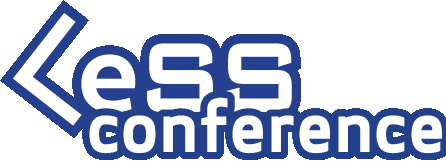Learning from Our Mistakes: Discussion and Practice with Optimization Goals
We are Dima (CTO/COO) and Ira (Agile Lead), leaders at Manychat, experienced
LeSS practitioners, and system designers.
We're eager to share our journey with the community. Two years ago, we
embarked on a path of innovation by creating optimization goals. Through this
journey, we discovered that we weren't the pioneers in this approach.
Nonetheless, we learned to navigate our organization using these goals, learning
from our mistakes, and maturing along the way. Now, we're adapting our
optimization goals to align with market changes and our evolving business strategy. During our presentation, we'll illustrate this evolution by showcasing two
sets of optimization goals from 2021 and 2023.
Manyсhat is a well-established startup with seven years of experience. Our
mission has been to develop a marketing automation tool that enables businesses
worldwide to communicate with customers through messaging apps, enhancing
efficiency and convenience.
Our company culture is deeply rooted in a strong business orientation, customercentricity,
and a people-focused approach. Initially, we believed these principles
were sufficient for success. However, partnering with Meta and achieving rapid
product-market fit with our Facebook Messenger-based product led to a Series A
funding round and the expansion of our team to 50 employees. Despite these
achievements, we encountered challenges in engineering, delivery speed, and
workflow organization, which "Just talk" failed to resolve. This period was marked
by a turbulent growth journey, ultimately prompting us to take control of our
destiny.
Through these challenges, we learned that organizational aspects play a pivotal
role in building a successful product company. We relied on our intuition,
conducted brainstorming sessions, delved into the "LeSS black book," and sought
guidance from consultants. As a result, we established criteria to design our
Product Group, accelerating our pursuit of Product Market Fit. Although we initially
felt like innovators, we realized that we were reinventing optimization goals.
Our initial set of optimization goals served as effective management tools for over
two years. They enabled us to achieve Product Market Fit across various markets.
Along with reaching key milestones in business, our optimization goals have
evolved. Visually, it looks like this:
(here is a timeline of our journey. I can't add a picture technically)
Starting from 2021 our Product Group was optimized for adaptability, fast
experimentation, product quality and people growth. We decided that optimization
goals should balance each other out.
💡 Small groups activity “Identify Weaknesses in Optimization Goals”.
Thanks to these optimization goals, we tested dozens of hypotheses,
experimented with channels – integrating with Shopify, Email, SMS, tried
Telegram, quickly pivoted, phased out Shopify, jumped into the Instagram beta,
soared like a rocket, and are still flying high. Now, we're heading towards
WhatsApp and once again considering Email :)
In 2023, with established Product Market Fit and steady growth on Instagram,
we're shifting from broad market expansion to a focused, deep dive approach,
delivering value specifically to defined Ideal Customer Profiles (ICPs). This
necessitates adapting our optimization goals and the structure around them.
We're redesigning the system to prioritize Quality & Stability, Learning & Expertise,
Scalability & Predictability.
💡 Small groups activity “Identify Strengths in Our Optimization Goals for
2023”.
This time around, we've become more pragmatic, taking into account trade-offs
and developing methods to measure the system's performance against these objectives. We've also aligned our optimization goals with our core values. But
hey, we're still a little bit idealistic :)
During the conference, we aim to provide the community with a transparent view
of our optimization journey, including our successes, failures, and key learnings.
By September, we anticipate unveiling our second set of optimization goals,
marking three years since our initial implementation. Through this comparison,
we'll showcase the evolution of our goals, their alignment with market dynamics,
and their impact on our product strategy.
Outcome for Participants: We aim to provide the community with a transparent
view of our optimization journey, including our successes, failures, and key
learnings. Through small group activities, participants will gain experience in
analyzing optimization goals for strengths and weaknesses, as well as observe the
evolution of optimization goals over three years.
Agenda:
1. Brief talk about Manychat's journey to/in LeSS.
2. Small group activity: "Identify Weaknesses in Optimization Goals for 2021".
3. Discussion about our weaknesses and learnings from the first set of
optimization goals, and how they still contributed to our progress.
4. Small group activity: "Identify Strengths in Our Optimization Goals for 2023".
5. Reflection on the second set of optimization goals.
